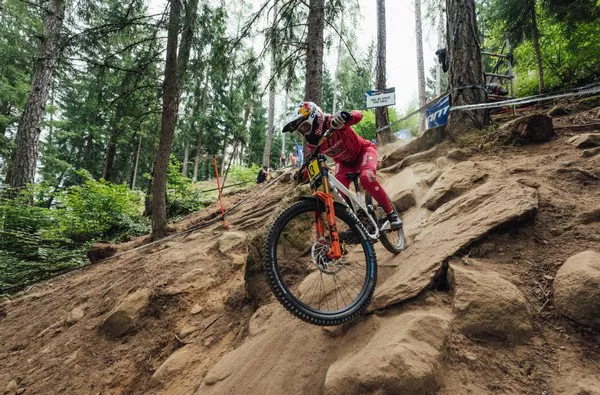Downhill mountain biking, an exhilarating sport that combines adrenaline with the beauty of the great outdoors, is not without its risks. While it offers an unparalleled rush for enthusiasts, the inherent dangers cannot be overlooked. In this article, we delve into the perils of downhill mountain biking, acknowledging the risks while advocating for safe practices to mitigate them.
Types of Potential Injuries
Downhill mountain biking presents a myriad of injury possibilities, ranging from minor scrapes to severe, life-altering trauma. Among the most common injuries are fractures, concussions, and sprains. Fractures, particularly of the wrist, collarbone, and clavicle, are prevalent due to high-impact crashes. Concussions, resulting from head impacts, pose significant risks to brain health and cognitive function. Sprains, affecting ligaments and tendons, occur frequently during falls or awkward landings.
The severity and likelihood of these injuries are influenced by various factors, including the intensity of the trail, rider experience, weather conditions, and equipment quality. Novice riders tackling advanced trails may find themselves ill-prepared for the technical challenges, increasing the risk of injury. Additionally, adverse weather such as rain or fog can decrease visibility and traction, leading to accidents. Equipment malfunctions or improper setup can also contribute to accidents, highlighting the importance of thorough pre-ride checks.
Factors Influencing Risk
1. Trail Difficulty: The difficulty level of a trail significantly impacts the risk involved in downhill mountain biking. Trails categorized as “black diamond” or “double black diamond” are characterized by steep descents, tight turns, and challenging obstacles, elevating the danger for riders.
2. Rider Experience: Experience plays a crucial role in mitigating risks. Novice riders may lack the skills and confidence necessary to navigate technical terrain safely. As riders gain experience and proficiency, they can better anticipate obstacles and react to challenging situations, reducing the likelihood of accidents.
3. Weather Conditions: Weather conditions such as rain, snow, or extreme heat can amplify the hazards of downhill mountain biking. Wet or icy trails reduce traction, increasing the chances of slipping or losing control. Extreme temperatures can also affect rider performance and concentration, heightening the risk of accidents.
4. Equipment Choice: The quality and condition of biking equipment directly impact rider safety. A well-maintained bike with proper suspension settings enhances control and stability, reducing the risk of crashes. Additionally, wearing appropriate safety gear, including full-face helmets, knee and elbow pads, and gloves, provides vital protection against injuries.
Statistics
While downhill mountain biking boasts a vibrant and growing community of enthusiasts, it is essential to acknowledge the associated injury rates. According to a study published in the Journal of Sports Medicine, the injury rate for downhill mountain biking is approximately 4.5 injuries per 1,000 hours of riding. Comparatively, other high-risk sports such as skiing and snowboarding have injury rates ranging from 2.5 to 7 injuries per 1,000 hours. While these statistics highlight the inherent risks of downhill mountain biking, they also underscore the importance of adopting safety measures to minimize injuries.
Promote Safe Practices
1. Essential Safety Gear
Investing in high-quality safety gear is paramount for downhill mountain biking. Full-face helmets provide crucial protection for the head and face, reducing the risk of concussions and facial injuries. Knee and elbow pads offer vital cushioning against impacts and abrasions, safeguarding vulnerable joints. Additionally, gloves provide grip and protection for the hands, while appropriate clothing protects against abrasions and weather elements.
2. Bike Maintenance and Setup
Regular bike maintenance is essential for ensuring optimal performance and safety on the trails. Conducting pre-ride checks to inspect brakes, tires, suspension, and other components can help prevent equipment failures and accidents. Proper suspension setup, tailored to rider weight and riding style, enhances stability and control, especially on rough terrain. Routine maintenance tasks such as lubricating chains, checking bolt tightness, and inspecting frame integrity should be prioritized to minimize the risk of mechanical failures.
3. Skill Development
Prioritizing skill development and training is fundamental for safe downhill mountain biking. Novice riders should start with basic trails suited to their skill level and gradually progress to more challenging terrain as they gain experience and confidence. Enrolling in mountain biking clinics or hiring a qualified instructor can accelerate skill development and teach proper techniques for navigating obstacles, cornering, and descending safely. Practicing fundamental skills in controlled environments before venturing onto advanced trails can significantly reduce the risk of accidents.
4. Trail Selection
Choosing trails that align with one’s skill level and experience is essential for minimizing risks in downhill mountain biking. Beginners should opt for well-marked, beginner-friendly trails with gentle descents and minimal obstacles. Intermediate riders can gradually explore more technical trails with moderate features, while advanced riders can tackle expert-level trails with steep descents, tight switchbacks, and challenging features. Researching trail ratings, reading reviews, and consulting with local riders can help determine the suitability of trails for individual skill levels and preferences.
5. Riding Techniques
Mastering fundamental riding techniques is crucial for navigating downhill mountain biking trails safely. Proper braking technique, including using both front and rear brakes judiciously, helps control speed and maintain stability on descents. Cornering techniques such as leaning the bike and maintaining an appropriate line through turns enhance control and minimize the risk of sliding out. Navigating obstacles such as rocks, roots, and drop-offs requires precise timing and body positioning to maintain momentum and avoid crashes. Practicing these techniques in controlled environments and gradually applying them on the trails can improve rider confidence and safety.
Conclusion
In conclusion, downhill mountain biking offers an exhilarating adventure amidst breathtaking natural landscapes, but it is not without its dangers. Acknowledging the risks associated with the sport and implementing safe practices are paramount for ensuring a fulfilling and injury-free experience. By prioritizing safety gear, bike maintenance, skill development, and responsible trail selection, riders can minimize risks and enjoy the thrill of downhill mountain biking responsibly.

